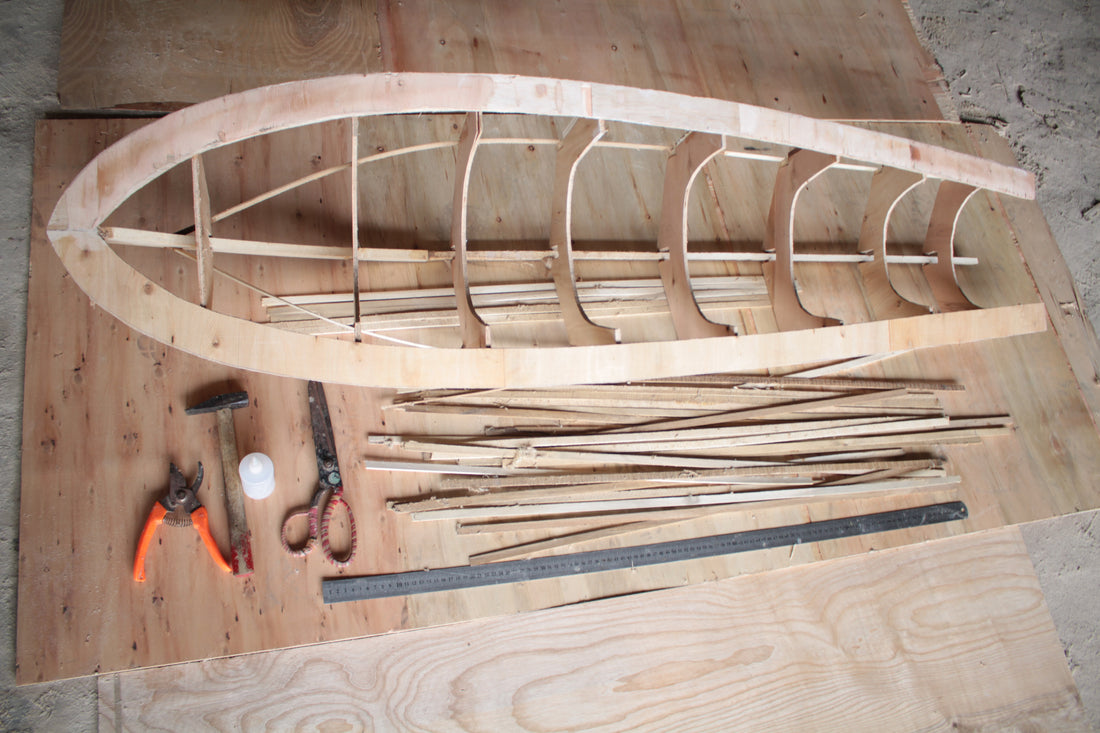
Build a wooden model ship by hand
How to Build a Wooden Model Ship by Hand: A Detailed Guide
Building a wooden model ship by hand is a fascinating and fulfilling task that requires craftsmanship, patience and attention to detail. From choosing the model to the final coat of paint, every step is a testament to masterful craftsmanship. In this blog post, we'll take you on a journey through the process of building a wooden model ship and introduce you to some famous historical ships and cruise ships that you can recreate yourself.
The selection of the model
Historic ships and cruise ships
Before you start building, you need to choose a model. Historic ships such as the HMS Victory , the Santa Maria and the USS Constitution are popular options for model builders who are passionate about maritime history. For lovers of modern ships, models of famous cruise ships such as the Queen Mary 2 or the Titanic offer an exciting challenge.
kits and construction plans
At holzmodellschiff.de you will find a wide selection of kits and construction plans for wooden model ships. Kits are ideal for beginners as they contain all the necessary materials and detailed instructions. Advanced model builders can use construction plans to build their own model from scratch.
Preparation and Materials
tools and materials
To build a wooden model ship you will need a number of tools and materials:
- Wood : High-quality wood such as mahogany or birch is ideal for model ships.
- Tools : A saw, files, sandpaper, tweezers and fine brushes are essential.
- Glue : Wood glue and superglue are important for assembly.
- Paints and varnishes : Acrylic paints and clear varnishes protect the model and give it a beautiful finish.
setting up a workstation
Set up a clean and well-lit workspace. A stable work surface and good lighting are crucial for precise work. An organizer for tools and materials helps you keep track of everything.
construction of the hull
frames and planking
The construction of the hull begins with the assembly of the frames, which form the basic structure of the ship. The frames are mounted on a keel plate and give the ship its shape. The hull is then planked. Thin wooden strips are attached from the keel plate to the upper edge of the frames.

grinding and smoothing
After planking, the hull is carefully sanded to achieve a smooth surface. This is an important step as a smooth base provides the foundation for a clean paint job and further details.
deck and superstructure
deck structure
The deck is made from thin wooden sheets and mounted on the hull. Make sure that all parts fit exactly and are firmly in place. The deck can be decorated with fine details such as plank joints and deck fittings.
superstructures and masts
The superstructures, such as bridge houses, masts and other structures, are built separately and mounted on the deck. These parts require special care as they often consist of many small individual parts. Use tweezers and fine brushes for precise work.
rigging and details
masts and yards
The masts and yards are made of thin wooden rods and covered with fine threads. This rigging is a characteristic feature of historic ships and requires patience and skill.
Small Details
Small details such as cannons, anchors and lifeboats add authenticity to the model. These parts can be made of wood or metal and are carefully painted and attached.
painting and finishing work
priming and painting
Before the model is painted, it is primed to seal the wooden surface. The ship is then painted with acrylic paints in several layers. Allow each layer to dry thoroughly before applying the next one.
clear coat and protection
Finally, the model is sealed with clear varnish. This protects the paint and wood and gives the model a glossy finish. Allow the varnish to dry completely before placing the model in its place.
presentation of the model
presentation showcases
A display case protects your model from dust and damage and allows you to present it in style. Choose a display case that suits the size and style of your model ship.
